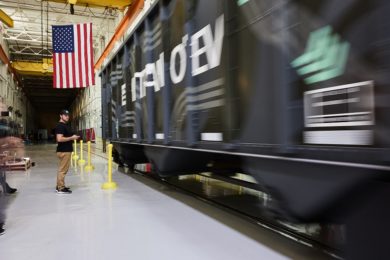Denison Mines Corp’s C$14.5 million (Denison’s share) exploration and evaluation budget for 2017 is focused on the company’s 60% owned flagship Wheeler River project, which is located in the infrastructure rich eastern portion of the Athabasca Basin region, in northern Saskatchewan.
Following a break in field activities, after the completion of a highly successful summer exploration program in October 2016, exploration drilling and project development work resumed at Wheeler River in early January 2017. The 2017 work program for Wheeler River includes approximately 46,000 m of infill and exploration drilling designed to confirm and expand uranium mineralization at or near the Gryphon deposit, ahead of the completion of a PFS for the project. Accordingly, a C$12.5 million work program and budget has been approved for Wheeler River in 2017, of which Denison’s share will be C$9.4 million – representing 75% of the project budget. As announced on January 10, 2017 (see latest issue of International Mining Project News), Denison has entered into an agreement with its Wheeler River Joint Venture partners, Cameco Corp and JCU (Canada) Exploration Ltd to fund 75% of Joint Venture expenses in 2017 and 2018 (ordinarily 60%) in exchange for an increase in Denison’s interest in the project to up to approximately 66%. Under the terms of the agreement, Cameco will fund 50% of its ordinary 30% share in 2017 and 2018, and JCU is expected to continue to fund its 10% interest in the project.
Additional exploration programs are expected to commence in the coming weeks on five high-priority pipeline projects included in Denison’s significant Athabasca-focused exploration portfolio. High-priority projects for 2017 include the recently acquired Hook-Carter project, in the western portion of the Athabasca Basin, as well as the Waterbury Lake, Murphy Lake, Crawford Lake and Moon Lake South projects in the eastern portion of the Athabasca Basin. The exploration and evaluation activities for 2017 are fully funded with a total budget of approximately C$14.5 million (Denison’s share). Including partner’s share of expenses, the projected 2017 work program is budgeted to cost over C$20.5 million, and is expected to include approximately 68,000 m of drilling across eight of Denison’s projects.
David Cates, President and CEO of Denison, commented, “Following the recent announcement of our agreement to increase our interest in our flagship Wheeler River project, from our existing 60% interest to up to approximately 66%, it should come as no surprise that our 2017 budget is heavily weighted towards the work required to advance Wheeler River towards the completion of a PFS. With new mineralization discovered in the immediate vicinity of the Gryphon deposit on numerous fronts in 2016, and the addition of the highly prospective Hook-Carter project to our exploration pipeline portfolio in late 2016, we are optimistic that 2017 is poised to be another high-impact year for Denison’s Saskatoon based exploration team.”
In April 2016, Denison released a PEA for the Wheeler River project, which evaluated the economic merit of co-developing the Gryphon and Phoenix deposits. The PEA returned a Pre-Tax IRR of 20.4%, based on a uranium price of $44/lb U3O8 and initial CAPEX for Denison’s 60% interest of C$336 million.
Since the PEA was released, Denison completed a highly successful 2016 exploration drilling program, which identified additional mineralization in the immediate vicinity of the Gryphon deposit – including the newly discovered D Series lenses to the northwest and the up-dip and down-dip expansion of the A and B Series lenses. These discoveries provide potential to materially increase the estimated mineral resources at Gryphon, which could extend the mine life in the economic model for the Gryphon deposit and ultimately improve the economics of the project. As a result, the original timeline for completing infill drilling at the Gryphon deposit during H1-2017 has been modified to allow for additional exploration and infill drilling throughout the 2017 winter and summer field seasons. Additional infill drilling is intended to improve the indicated resource base at Gryphon for inclusion in the PFS. Consequently, the completion of the PFS has also been deferred from H2-2017 to H1-2018.
Project development field programs, including environmental and engineering data collection programs required for the PFS and Environmental Assessment process, commenced at Wheeler River in June 2016 (Denison’s release dated November 2, 2016 for a detailed update). Existing data collection programs will continue during 2017 and additional programs, including metallurgical testing and analysis, will be initiated. Further engineering studies related to shaft sinking methodologies, mining methods and water treatment will also be initiated in 2017. In addition, throughout the year, Denison expects to continue to advance and strengthen relationships with various northern communities.










